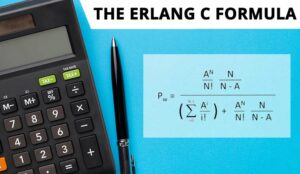In the world of contact centres and BPOs, navigating the sea of abbreviations and acronyms can be overwhelming.
Neil posed a question to our community of industry professionals, seeking clarification on a point of confusion:
“I am working with a phone system, and the reporting can be slightly confusing. Can I confirm that the most accurate method for calculating PCA% is based on calls answered versus calls offered (and not presented)?”
And so we took a look into this topic in a bit more detail.
Understanding PCA (Percentage of Calls Answered) and Abandon Rate in Contact Centres
In contact centres, PCA (Percentage of Calls Answered) and Abandon Rate are two key metrics used to evaluate service efficiency.
They often have an inverse relationship, and understanding the factors that influence these metrics can help improve both operational performance and customer satisfaction.
What is PCA?
PCA stands for Percentage of Calls Answered, and represents the percentage of incoming calls successfully answered by agents. It shows how effectively a contact centre handles call volume.
PCA Formula
The formula to calculate PCA (Percentage of Calls Answered) is:
PCA = (Total Calls Answered ÷ Total Incoming Calls) × 100
For example, if a contact centre receives 1,000 calls and answers 950, the PCA would be:
PCA = (950 ÷ 1000) × 100 = 95%
This means 95% of calls were handled, indicating a strong capacity to manage customer inquiries.
What is Abandon Rate?
Abandon Rate measures the percentage of calls where customers hang up before an agent answers. A high abandon rate often reflects long wait times or dissatisfaction with the service.
Abandon Rate Formula
The formula to calculate Abandon Rate is:
Abandon Rate = (Total Calls Abandoned ÷ Total Incoming Calls) × 100
For example, if the same centre receives 1,000 calls, and 50 customers abandon their calls before reaching an agent, the Abandon Rate is:
Abandon Rate = (50 ÷ 1000) × 100 = 5%
Factors Influencing Abandon Rate
Several factors can influence the abandon rate in a contact centre, including:
Wait Times
Long wait times are the primary reason for abandoned calls. If customers are left on hold for too long, they are more likely to hang up.
Call Volume
High call volumes, especially during peak hours, can overwhelm contact centres, increasing queue times and abandonment rates.
Staffing Levels
Insufficient staffing leads to longer queues, higher abandon rates, and a lower percentage of calls answered. Adequate staffing during peak periods is essential to keep both metrics in balance.
Caller Patience
Some customers are less patient and more likely to abandon calls if they don’t reach an agent quickly. This behaviour varies by industry and urgency of the inquiry.
Inverse Relationship Between PCA and Abandon Rate
PCA and Abandon Rate are inversely related: when PCA is high, the Abandon Rate tends to be low, and vice versa.
For example, in the earlier example where PCA is 95%, the Abandon Rate is 5%, meaning 95% of calls are answered, and 5% of customers hang up before speaking with an agent. As PCA improves, fewer customers abandon their calls, leading to a lower Abandon Rate.
Conversely, if staffing or system issues cause fewer calls to be answered, the abandon rate will rise as more customers hang up.
This article was made possible due to the great community of experts we have at Call Centre Helper, to get involved just join our LinkedIn Community and and if you aren’t already make sure you are following us on LinkedIn to see our latest content.
For more on calls and abandon rate, read these articles next:
- How to Measure Call Abandon Rate
- What Is the Difference Between an Abandoned, a Missed and a Lost Call?
- How to Predict Call Abandon Rates Based on Service Level
Author: Jonty Pearce
Reviewed by: Robyn Coppell
Published On: 12th Apr 2022 - Last modified: 18th Oct 2024
Read more about - Call Centre Questions, Abandoned Calls, How to Calculate














